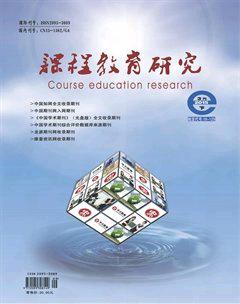浅析英语同位语的翻译
陈于全 马媛
【摘要】英语同位语有时可以译成相应的汉语同位语,有时在翻译时将英语先行词和其同位语的次序颠倒一下,有时可在翻译时补充“即”或“就是”。
【关键词】英语 同位语 先行词 翻译
【中图分类号】G633.41 【文献标识码】A 【文章编号】2095-3089(2015)03-0110-01
英语里同位语也是一种名词修饰语,单词、短语和从句都可用作同位语,最简单而又常见的同位语是位于所修饰的先行词之后,用来说明身份、职务、称号等的名词或名词短语。下面就怎样翻译英语同位语这一问题谈谈笔者的拙见。
1. 与先行词之间有逗号隔开的同位语,翻译成汉语时要将其译在它所修饰的先行词的前面。
A. Mr. Black, our English teacher, is a good tennis player.
我们的英语老师布莱克先生是个优秀的网球选手。
B. Winston Churchill, Britains Prime Minister during the Second World War, died in 1965.
第二次世界大战期间的英国首相温斯顿·丘吉尔于1965年去世。
2. 对于既没有引导词又没有标点符号引导的同位语,翻译成汉语时可以按正常的语序翻译,即先翻译先行词后翻译其同位语。
A. At that time on one dared to question the great philosopher Aristotle.
当时没有人敢向大哲学家亚里士多德发问。
B. He gave his wife Jones a wonderful watch.
他送给他的妻子琼斯一只精美的手表。
3. 为了使先行词与同位语之间的关系更加紧密,英语里常将某些引导词省略,译成汉语时为了达到同样的目的,可用冒号或破折号连接。
A. At last, we reached our destination, Hamburg.
我们最终到达了目的地——汉堡。
B. All the things have two faces, a light one and a dark one.
一切事物都有两个方面:光明的一面和黑暗的一面。
4. 有时由名词短语充当的同位语在翻译成汉语时要将同位语部分与主语部分分开,从而引出两个句子。
A. On the evening of 29th June, a day I shall never forget we landed at Durban.
六月二十九日晚上,我们在德班登陆,那一天我终身难忘。
B. He always laughed loud and long at his own jokes, a habit that won him no admirers.
他总是对自己所讲的笑话发出长时间的、响亮的笑声,这个习惯别人都感到讨厌。
5. 由namely, that is, for example, as, such as等插入语引导的同位语,翻译成汉语时,可按照原句,将这些插入成分也照样译出。
A. We visited two big cities in England, namely, London and Manchester.
我们访问了英国的两个大城市,那就是伦敦和曼彻斯特。
B. Some animals, such as foxes and squirrels, live in woods.
有些动物,如狐狸和松鼠,栖息在森林里。
6. 由疑问词what, who, which, when, where, how以及连接词whether引导的同位语及其从句,在翻译成汉语时,一般将它放在先行词之前。
A. The question how to answer his letter annoyed me.
怎样答复他的信这个问题使我很烦恼。
B. The problem where they should get the money is to be discussed at the meeting.
他们该从哪儿弄到这笔钱的问题将在会议上讨论。
7. 由that引导的同位语从句,如果从句较短,可放在先行词之前。
A. No one can deny the fact that the earth moves around the sun.
没有人能否认地球围绕太阳转这个事实。
B. The news that he would resign proved to be incorrect.
他将辞职的消息证明是不正确的。
但如果从句较长,在翻译时则往往要重复某些与先行词意义相近的动词,或补充一些能对先行词作进一步解释的引导词,如“所谓”、“认为”、“即”、“那就是”等等。这类同位语往往要译成两个句子。
A. My grandfather was obviously wrong in his opinion that a womans place was in the home.
我祖父的观点,即所谓女人的位置应该在家里,很明显是错误的。
B. My suggestion that we stick to our original plan was finally accepted.
我建议坚持我们原先的计划,这个建议最终被采纳了。
对于含有像(on the )grounds, (on the)supposition, (on the) understanding, (with the) exception, (in spite of) the fact等先行词的同位语从句,翻译成汉语时,一般应译成相应的状语从句,即“由于(因为)……”,“假如……”,“如果……”,“除非……”,“尽管……”等。
A. He left ahead of time on the grounds that he was ill.
因为他生病了,所以提前离开了。
B. The child boarded the train to Beijing in spite of the fact that there was little money on him.
尽管这个男孩身上没带多少钱,但他还是坐上了开往北京的火车。
参考文献:
[1] 周伟. 浅谈英译汉中的词类转译现象[J]. 辽宁师专学报, 2007(4).
[2] 朱江. 浅析英译汉中的词类转译[J]. 长春金融高等专科学校学报, 1998(3).

